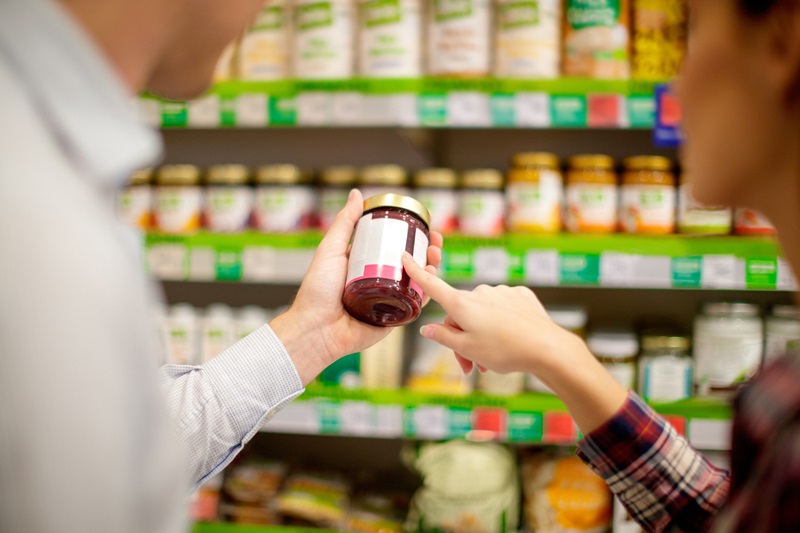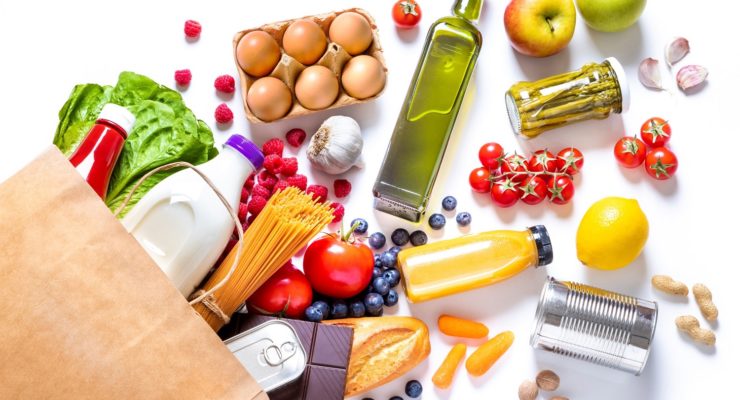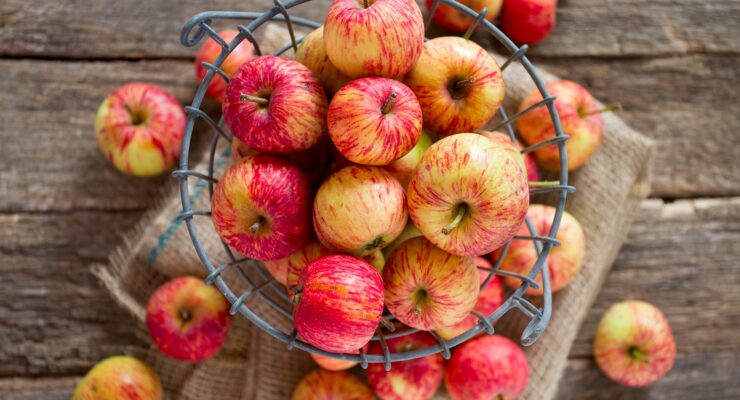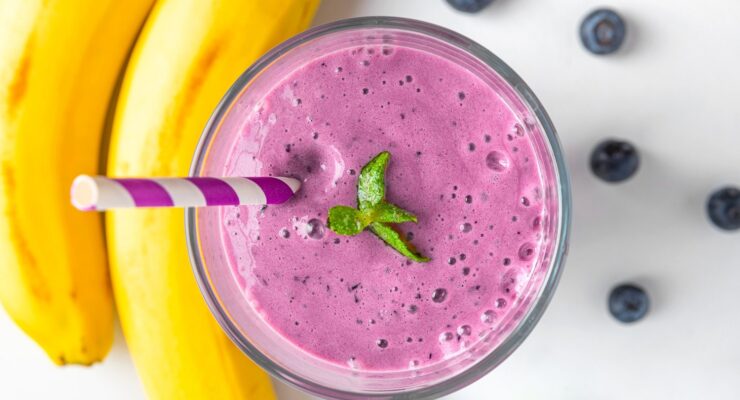Shop Like A Dietitian: Decoding Health Claims on Food Labels
Article posted in: Diet & Nutrition Experts’ Corner
Understanding food label health claims is an essential skill for building a healthy diet. While shopping for healthy foods sounds simple, it’s anything but. Food manufacturers often use misleading packaging to make their products sound better than they are. Fads and trends also affect what’s considered “good” food.
Let’s break down common food claims so you have the tools to choose the best options for your goals and values. With this knowledge, you’ll confidently shop for healthy foods without getting distracted by misleading claims.
Types of Label Claims

Walk through the aisles, and you’ll see plenty of bold and bright language on every package, boasting claims like “gluten-free,” “sustainable” and “no added hormones.” These messages are designed to grab your attention and often justify higher prices. Most claims fall into one of three categories:
- Nutrient Claims (e.g., low in fat, high in fiber, no added sugars)
- Ingredient Claims (e.g., organic, non-GMO, natural)
- Animal Welfare Claims (e.g., cage-free, free-range, grass-fed, antibiotic-free, hormone-free)
There are different things to consider in each category, and they don’t all mean much when it comes to your health. So let’s look at what’s worth your attention and what you can leave on the shelf.
1. Nutrient Claims

What to know:
Nutrient claims highlight a product’s nutritional merits and are regulated by the Food and Drug Administration (FDA) to some extent. For example, products must meet specific criteria to be labeled low-fat, low-sodium or fiber-rich.
However, a single nutrient claim doesn’t mean the entire product is healthy. For instance, a low-fat cracker might be high in added sugars. A low-carb wrap may be high in protein but also high in calories and low in fiber.
Furthermore, companies often use creative language to imply nutritional benefits when the product might have little nutritional value.
What can be misleading:
- Product names: Companies can name their products anything they want. Names like “Protein Plus” or “Simply Good” suggest healthfulness but often don’t differ much from traditional products. Always check the nutrition facts panel.
- Multigrain: This means that a product contains more than one type of grain, not necessarily whole grains, and often contains refined flour as a top ingredient.
- Made with real fruits or vegetables: This claim can be misleading as the product may contain a small percentage of the advertised fruit or vegetable. Always read the label to find the actual percentage and check the ingredient list.
- Made with whole grains: This claim can be used even if the product contains as little as 1% whole grains.
What to look for instead:
- Nutrition facts panel: This section is your key to understanding which nutrients a food product provides (and doesn’t provide). The FDA provides a guide to help you understand each section. Compare products side by side, looking at serving size, calories, saturated fats, fiber, sugar and protein to pick the best option. If following a specific meal plan like Nutrisystem, use their grocery guide parameters.
- Ingredients statement: Ingredients are listed in order of weight, so the first few ingredients represent the bulk of what that product is made from. Ensure the first few ingredients match your expectations. For example, yogurt should list milk as the first ingredient, not sugar.
- 100% fruit or vegetable juice: Drinks labeled 100% fruit or vegetable juice are made entirely of fruits and vegetables, but may come from various sources.
- 100% whole grains: This claim means a product contains a full serving or more of whole grains, and all grains used are whole.
- Good/Excellent source: These terms call out the presence of healthy nutrients, like vitamins, minerals, fiber and protein (e.g., “Good source of fiber”). To say something is a good or excellent source means it provides 10 to 20% or more of your daily needs for this nutrient in each serving. Remember, it doesn’t mean the entire product is healthy, so check the nutrition panel for the full picture.
- Reduced/Lite/Low/Free: These terms call out the absence or reduction of unhealthy nutrients like sodium, fat, sugar and cholesterol (e.g., “Reduced sodium bread”). Products must meet specific criteria to use these claims. For example, “reduced” means a product contains 25% less of a given nutrient than the traditional version, while “lite” means it contains 50% less. Again, this doesn’t guarantee a product is healthy, so use the Nutrition Facts panel to verify.
- No Added Sugar: This claim guarantees no sugar was added during processing but doesn’t mean the product is sugar-free, as many foods contain natural sugars.
Key Takeaway:
Don’t rely on product names or front-of-package nutrient claims. Instead, focus on the FDA-regulated nutrition facts panel and ingredient statement for accurate information. Use these to compare products and make informed choices.
2. Ingredient Claims

What to know:
More and more people are interested in knowing where their food comes from and how it’s made. While that’s generally a good thing, it also means new marketing claims for ingredient quality are now on food packaging.
Most of these claims don’t impact health but may align with personal preferences. Here’s the info you need to know to find your best options.
What can be misleading:
- Clean-label: This unregulated term varies by brand and doesn’t provide meaningful or consistent information about ingredient quality.
- No Hormones Added: The FDA approves some growth hormones for cattle and lamb but not for chicken, pork and other meats. Adding the ‘no hormones added’ claim to these meats can be misleading, especially if they come with a higher price tag. It also doesn’t guarantee hormone-free products; rather, it means no additional hormones were given, as hormones naturally occur in animals
- No Antibiotics: This claim on meat packaging tells you whether an animal received antibiotics at any point. However, different versions mean different things. For instance, ‘raised without antibiotics’ means the animal never received antibiotics, while ‘responsible use of antibiotics’ may mean an animal received antibiotics to treat illness but not for promoting growth. The World Health Organization urges producers to limit antibiotic use in healthy animals to combat antibiotic resistance in humans. Producers must document processes for these claims, but oversight is minimal.
- Non-GMO: This claim suggests that genetically modified foods (GMOs) are less healthy or safe than non-GMOs. However, research shows that GMOs are just as safe and nutritious as conventional foods. In fact, some GMOs are bred to improve flavor and nutrition.
- Natural: Both the FDA and the United States Department of Agriculture (USDA) offer some guidance on the term ‘natural,’ but oversight and verification are limited. USDA regulations require natural meat to be free from artificial flavors, colors, and preservatives and minimally processed. For other products, the FDA’s unregulated guidance states that ‘natural’ should mean no synthetic or artificial ingredients. However, interpretation varies widely, and foods labeled ‘natural’ may still contain synthetic ingredients.
- Organic: Organic foods are not necessarily more nutritious or safe but may align with personal values. There are different types of organic claims. “100% organic” means the entire product is certified organic. “Organic” means 95% of the ingredients are certified organic. “Made with organic” means 70% of ingredients are certified organic. Foods with less than 70% organic ingredients can label which ingredients are organic. Remember, organic doesn’t mean healthier, so consider if it’s worth the extra cost.
- Gluten-free/Grain-free: Unless you have a specific allergy or intolerance, there’s nothing inherently healthier about gluten-free or grain-free products. Many are heavily processed, removing important nutrients.
What to look for instead:
- Minimal ingredients with no unnecessary additives. Basic foods can be just as convenient as packaged foods with less mystery. Include plenty of fruits and vegetables (fresh, frozen or canned without added seasonings), canned tuna or salmon in water, chicken breast, eggs, oats, nuts, canned beans, plain rice and noodles.
- Whole foods listed first: Check that the first three ingredients in the ingredients statement match what you expect. For example, a granola bar should contain oats as the first ingredient, and not corn syrup.
- Local food sources: The best way to get to know what’s in your food, is to meet the people growing it. Look for opportunities to join food co-ops in your area, if possible.
Key takeaway:
Vague and unregulated claims such as ‘clean label,’ ‘non-GMO’ and ‘hormone-free chicken’ often increase costs and imply health benefits, despite being no better than standard, more affordable options. Evaluate product quality yourself using the ingredient statement and be cautious of misleading language used in these claims.
3. Animal Welfare Claims

What to know:
The treatment of animals in our food supply matters to many people. However, some claims lack clarity. Here’s the information to help you identify products that genuinely align with your animal welfare values.
What can be misleading:
- Grass-fed: Primarily refers to beef. Some studies show grass-fed beef is higher in certain nutrients, but there’s no evidence it’s healthier than conventional meat. The term is poorly defined and regulated, and producers can use it even if only part of an animal’s diet is grass.
- Pasture-raised: Implies an animal had free outdoor access, but it’s not well-defined or regulated. The quality and amount of space and level of access vary and don’t consider feed.
- Cage-free: Refers to egg-laying hens. While not caged, they may still be in overcrowded pens without outdoor access.
- Free range: Refers to poultry. While regulated, there’s no standard for how much outdoor time birds have. Plus, this type of farming may not align with particular breeds’ natural instincts, creating unsafe socialization.
What to look for:
- Third party certifications: Reliable third-party certifications ensure producers adhere to well-defined industry best practices for each breed and are regularly evaluated. Some certifications include:
- USDA Process Verified
- Animal Welfare Approved
- American Grassfed
- Global Animal Partnership
- Certified Humane
Key takeaway:
Many animal welfare claims are vague and poorly regulated. Look for options that have been certified by third-parties to ensure best processes for animal welfare are being maintained.
Conclusion
Navigating food label claims can be challenging, but with the right knowledge, you can make informed choices that align with your health and values. Look beyond marketing buzzwords and focus on reliable information such as the Nutrition Facts panel, ingredients list and trusted certifications. With these tools, you’ll confidently select foods that support a healthy lifestyle.
References:
- Nutrition C for FS and A. Label Claims for Food & Dietary Supplements. FDA. Published online February 5, 2020. Accessed May 28, 2024. https://www.fda.gov/food/food-labeling-nutrition/label-claims-food-dietary-supplements
- FDA. How to Understand and Use the Nutrition Facts Label. FDA. Published online September 27, 2023. Accessed May 28, 2024. https://www.fda.gov/food/nutrition-facts-label/how-understand-and-use-nutrition-facts-label
- Center for Veterinary Medicine. Safety & Health. U.S. Food and Drug Administration. Published 2020. Accessed May 28, 2024. https://www.fda.gov/animal-veterinary/safety-health
- Meat and Poultry Labeling Terms | Food Safety and Inspection Service. Usda.gov. Published 2012. Accessed May 28, 2024. https://www.fsis.usda.gov/food-safety/safe-food-handling-and-preparation/food-safety-basics/meat-and-poultry-labeling-terms
- FDA. GMOS and Your Health Feed Your Mind.; 2022. Accessed May 28, 2024. https://www.fda.gov/media/135280/download#:~:text=These%20studies1%20show%20that
- Kuchler F, Sweitzer M, Chelius C. The Prevalence of the “Natural” Claim on Food Product Packaging. www.ers.usda.gov. Published 2023. Accessed May 28, 2024. https://www.ers.usda.gov/publications/pub-details/?pubid=106478
- USDA. Organic Labeling | Agricultural Marketing Service. Usda.gov. Published 2019. Accessed May 28, 2024. https://www.ams.usda.gov/rules-regulations/organic/labeling
- Labeling Guideline on Documentation Needed to Substantiate Animal Raising Claims for Label Submissions (2019) | Food Safety and Inspection Service. Usda.gov. Published 2019. Accessed May 28, 2024. https://www.fsis.usda.gov/guidelines/2019-0009
- Provenza FD, Kronberg SL, Gregorini P. Is Grassfed Meat and Dairy Better for Human and Environmental Health? Frontiers in Nutrition. 2019;6(26). doi:https://doi.org/10.3389/fnut.2019.00026









